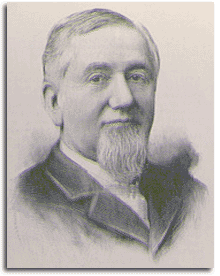One of the most prominent figures in the history of New York State was George Mortimer Pullman. Born into a lowly carpenter family, Pullman went on to become a widely renowned businessman. He revolutionized train travel by building one of the most luxurious rail cars in American history. Pullman made a fortune by building luxury rail cars and leasing them to rail companies.
 Born on March 3, 1831, in Brockton, New York, George Pullman initially worked as a cabinetmaker in his brother’s shop. His life’s turning point came during the setup of a new sewage system in Chicago, Illinois. The system required the elevation of some buildings. Pullman won a contract for raising the buildings. Using a series of jackscrews, he lifted the buildings with such efficiency and precision that the businesses in those buildings proceeded without any interruption during the elevation work. Pullman won laurels for his extraordinary work, and also a good amount of money.
With the newly acquired money, Pullman, along with his close friend and State Senator Benjamin Field, set up a sleeper rail car company around 1858. Pullman got the idea of building luxury rail cars, following a tiresome rail journey. Those luxury cars contained fine decor and upholstery. Some of them even boasted a posh restaurant. The most famous model produced by his company was the Pioneer. That rail car was taller and wider than conventional ones. It attained great fame when President Abraham Lincoln’s remains were carried to the burial site in that special coach.
Pullman had a unique way of doing business. He did not sell his sleeper cars. Instead, he leased them to the rail companies. Those companies handed over the premium they received from luxury coach passengers. During its peak, Pullman’s company had contracted roughly 2,000 sleeper luxury cars on lease. The company was worth $62 million. The company’s fortune was however short-lived. The recession of 1893 exerted a great effect on it. Production cuts, wage cuts and layoffs were implemented by Pullman, which resulted in a violent strike. Government troops were called in to handle the situation. The incident greatly tarnished Pullman’s reputation and fame.
George Pullman died of a heart attack on October 19, 1897, and was buried at Graceland Cemetery in Chigago. Owing to the fears that former employees would desecrate his body, the grave was dug deep and reinforced with concrete and steel. A towering Corinthian column now stands over his grave.
Born on March 3, 1831, in Brockton, New York, George Pullman initially worked as a cabinetmaker in his brother’s shop. His life’s turning point came during the setup of a new sewage system in Chicago, Illinois. The system required the elevation of some buildings. Pullman won a contract for raising the buildings. Using a series of jackscrews, he lifted the buildings with such efficiency and precision that the businesses in those buildings proceeded without any interruption during the elevation work. Pullman won laurels for his extraordinary work, and also a good amount of money.
With the newly acquired money, Pullman, along with his close friend and State Senator Benjamin Field, set up a sleeper rail car company around 1858. Pullman got the idea of building luxury rail cars, following a tiresome rail journey. Those luxury cars contained fine decor and upholstery. Some of them even boasted a posh restaurant. The most famous model produced by his company was the Pioneer. That rail car was taller and wider than conventional ones. It attained great fame when President Abraham Lincoln’s remains were carried to the burial site in that special coach.
Pullman had a unique way of doing business. He did not sell his sleeper cars. Instead, he leased them to the rail companies. Those companies handed over the premium they received from luxury coach passengers. During its peak, Pullman’s company had contracted roughly 2,000 sleeper luxury cars on lease. The company was worth $62 million. The company’s fortune was however short-lived. The recession of 1893 exerted a great effect on it. Production cuts, wage cuts and layoffs were implemented by Pullman, which resulted in a violent strike. Government troops were called in to handle the situation. The incident greatly tarnished Pullman’s reputation and fame.
George Pullman died of a heart attack on October 19, 1897, and was buried at Graceland Cemetery in Chigago. Owing to the fears that former employees would desecrate his body, the grave was dug deep and reinforced with concrete and steel. A towering Corinthian column now stands over his grave.